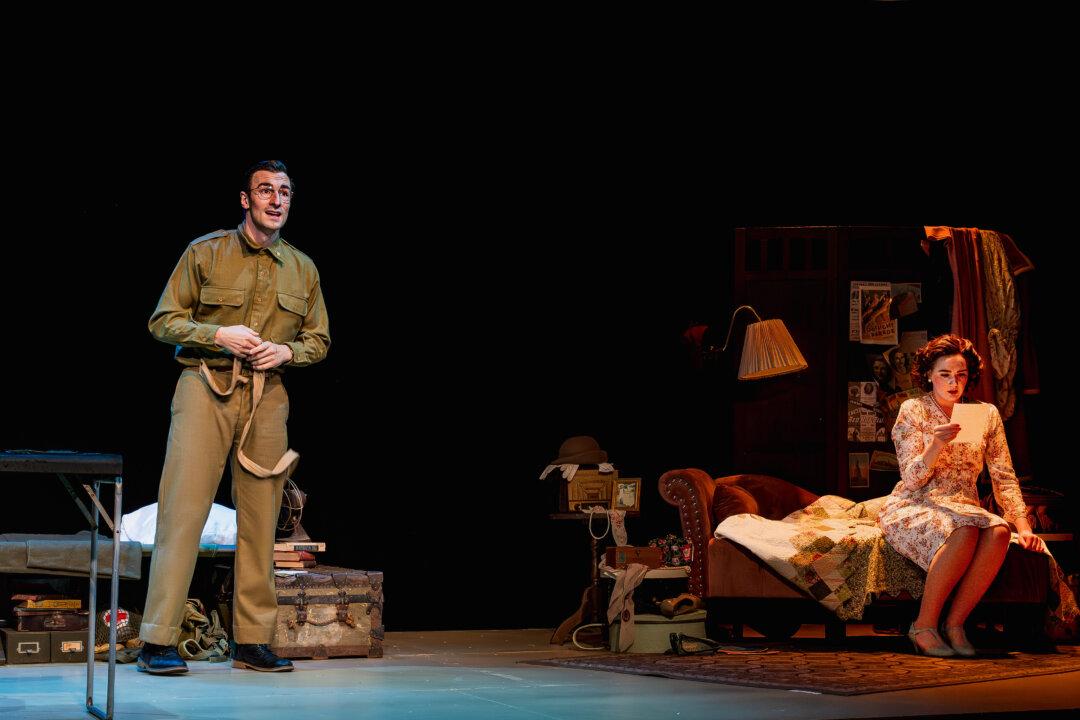With works ranging from those which have long since attained classic status—such as the 1952 MGM musical “Singin' in the Rain”—to those forgotten by all but a few (anyone remember the Broadway musical “A Doll’s Life”?), wordsmiths extraordinaire Betty Comden and Adolph Green have a special place in the pantheons of American entertainment.
Both children of immigrants, Comden (born Basya Cohen, 1917–2006) and Green (1914–2002) each developed a love of performing at an early age. Their first professional engagement together, though they had met sometime earlier, was in 1938, as part of a group called “The Revuers” at The Village Vanguard, a popular club for the bohemian crowd in New York City’s Greenwich Village.
There, the performers began using their own material as a way to avoid paying royalties to others. While writing quickly became Comden and Green’s main focus, the two never completely gave up performing. They were both members of the opening night cast of the 1944 Broadway musical “On the Town,” for which they also wrote the book and lyrics.
The two would also perform together in their show “A Party With Betty Comden & Adolph Green,” where they presented a selection of musical numbers they had created over the years.
As noted in the book’s preface, “They Made Us Happy” is not so much a work about who Comden and Green were, but rather, what Comden and Green jointly created. The two met almost every day to work on whatever projects they were involved with at the moment, while always on the lookout for something new that might pique their interest.
While Propst includes a good amount of biographical information, that is, dates of birth, death, and mentions of their respective marriages, children, and involvement in various social causes, more than 90 percent of the work covers their professional collaborations.
When reading about the duo’s various projects, one begins to see several genres come up time and again. The first of these is satire, which began during the duo’s time with The Revuers. The performers took great pleasure in skewering the various topical issues of the day.
Frequent topics that appeared in their work were nostalgia and the world of show business. These motifs, with present-day elements mixed in, are present in such efforts as “Singin' in the Rain,” which spoofed the early days of Hollywood; and “The Band Wagon” (1953), which gleefully illustrated the chaos and dueling egos that are often part of the theatrical creation process. Though any biting wit was always thematically folded into a love letter for the world they were depicting. These topics were also visible in the stage works “Fade Out - Fade In” (1964), “Applause” (1970), and “The Will Rogers Follies” (1991).
However, as Propst also shows, there was more than one occasion when Comden and Green’s efforts were deemed out of step with the tastes of the moment. An example of this is the Broadway show “Hallelujah, Baby!” (1967). The work had Civil Rights overtones and was regarded by some critics as too much of a token effort in respect to what was currently going on in the world. On the other side of the coin was the response to “Subways Are for Sleeping” (1961), which looks at New Yorkers living on the fringes of society. The piece was regarded in some quarters as too dark.
“Subways” also illustrates another favorite topic used by Comden and Green: New York City. New Yorkers born and bred, the two much preferred East Coast living. They often felt constrained by the Hollywood studio system whenever they had to relocate there to work on films.

How It’s Put Together
Propst has clearly done his research, as evidenced by the lengthy listing of source materials at the end of the book. A particularly nice touch is his tendency to reference the sometimes different recollections of people involved in a specific incident, and then offer a theory of which account actually seems more plausible and why.He also elaborates on some publicity stunts, along with many other asides, trivia, and name dropping. Much of this material is presented through the use of sidebars, which allows the author to maintain the work’s narrative flow.
Just about the only thing missing from “They Made Us Happy” is an appendix listing the various projects Comden and Green worked on, for easy reference. Though in all other aspects, the book offers very informative and entertaining read for both the serious musical (and musical theater) aficionado and one with only a passing familiarity with some of the duo’s more famous works.





